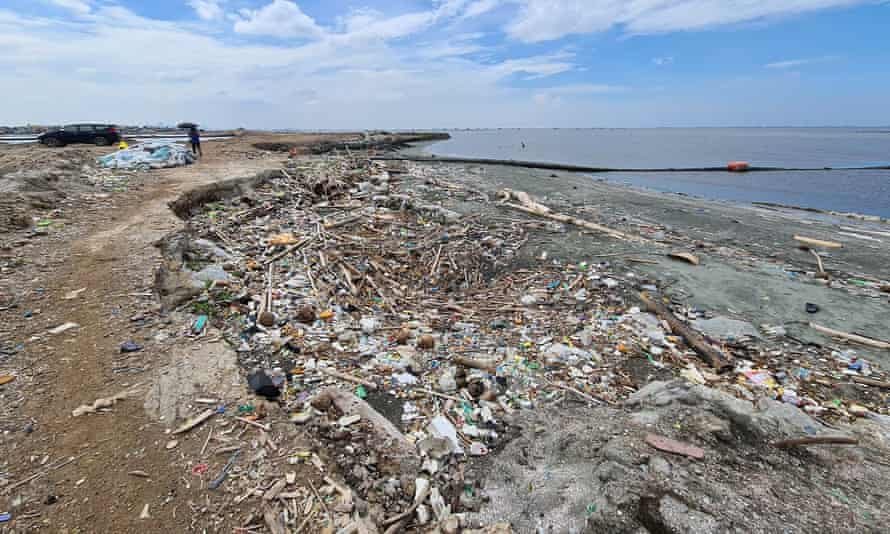Photos show Manila Bay mangroves ‘choking’ in plastic pollution
The Navotas mudflats are among the last of their kind and act as a crucial feeding ground for migratory birds, but they are being buried in plastic


Last modified on Tue 5 Oct 2021 15.22 EDT
There are stray, abandoned flip flops, old foil food wrappers, crumpled plastic bags, and discarded water bottles. The Navotas mudflats and mangroves in Manila Bay are buried in a thick layer of rubbish.
It is “almost choking the mangrove roots,” Diuvs de Jesus, a marine biologist in the Philippines who photographed the area on a recent visit, said.
The wetlands are of huge environmental significance. They provide a crucial feeding ground for migratory birds, offer protection against floodwater and help tackle climate change by absorbing far greater levels of carbon dioxide than mountain forests.

The plastic pollution, though, could devastate the area. Mangroves have special roots, known as pneumatophores, “sort of like a snorkel that helps them breathe in when sea water rises,” says Janina Castro, member of the Wild Bird Club of the Philippines and advocate for wetland conservation. Plastic risks suffocating pneumatophores, weakening, and potentially killing the trees.
The mudflats and mangroves are already one of the last of their kind in Manila Bay, an area that was once lined with lush, green shrubs and trees. Manila is thought to have been named after the Nilad, a stalky rice plant that grows white flowers, and which once thrived along the coastline. At the end of the 19th century, there were up to 54,000 hectares of mangrove wetlands along the bay, according to an estimate cited by Pemsea, a regional, marine protection partnership coordinated by the United Nations. By 1995 this had fallen to fewer than 800 hectares.
Today, Manila, one of the most densely populated cities in the world, is more likely to be associated with traffic jams than flourishing mangroves.
“If only we banned single-use plastics, that will greatly reduce the litter,” De Jesus said. He worries also about the looming threat of reclamation – where coastlines are extended outwards as rock, cement and earth are used to build new land in the sea.

The Navotas mangroves and mudflats are vital to the survival of migratory birds that visit the Philippines as part of the east Asian-Australasian flyway – a route that stretches from Arctic Russia and North America down to Australia and New Zealand.
A number of endangered birds have been spotted feeding and resting in the wetlands, including the black-faced spoonbill, the far eastern curlew, and the great knot. The critically endangered Christmas Island frigatebird was also recently seen flying low over Navotas, Castro says.
Environmentalists fear plastic pollution could ultimately harm such species. It breaks down into microplastics, which can be eaten by fish and shellfish – and, consequently, also be ingested by birds. It can also lead to an accumulation of toxic chemicals, and act as a vector for disease, threatening birds and their prey, Castro said.
“A number of these species currently have conservation efforts happening in other countries, but these efforts need to be mirrored in all of the staging sites including the Philippines,” Castro said.
There is a misconception that mudflats are not as valuable or aesthetically pleasing as other types of wetlands, Castro said. But they play an important role in tourism, providing livelihoods and offering wave protection. “Educating the public about these benefits is critical for its survival,” she said.
